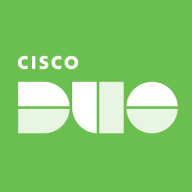

Cisco Duo and Red Hat Single Sign On are leading authentication solutions. Cisco Duo appears to have the upper hand due to its stronger focus on security and customer support.
Features: Cisco Duo users highly value its multi-factor authentication, ease of use, and robust security features. Red Hat Single Sign On is praised for its flexibility, scalability, and ability to support a wide range of identity providers.
Room for Improvement: Cisco Duo users desire more comprehensive reporting and analytics tools. Red Hat Single Sign On reviewers cite the need for a more intuitive setup process and enhanced documentation.
Ease of Deployment and Customer Service: Cisco Duo is noted for its straightforward deployment and responsive customer support. Red Hat Single Sign On, while powerful, is reported to have a more complex deployment process and mixed reviews on support responsiveness.
Pricing and ROI: Cisco Duo's pricing is seen as reasonable for the features delivered, with positive ROI feedback from users. Red Hat Single Sign On is valued for its cost-effectiveness in large-scale deployments but has mixed ROI reviews.
| Product | Market Share (%) |
|---|---|
| Cisco Duo | 5.0% |
| Red Hat Single Sign On | 2.1% |
| Other | 92.9% |


| Company Size | Count |
|---|---|
| Small Business | 27 |
| Midsize Enterprise | 16 |
| Large Enterprise | 36 |
Cisco Duo is a cloud-based identity security tool offering easy and wide-ranging access protection for users and devices worldwide. It assures identity-first security with clear visibility across multi-cloud, hybrid, and on-premises environments.
Cisco Duo provides robust multi-factor authentication and seamless integration capabilities with existing infrastructures. Appreciated for its stability and speed, it supports distributed workforces by securing VPN access, corporate networks, and cloud services. Duo’s comprehensive identity ecosystem supports easy deployment and management through a single-pane-of-glass management interface. It seamlessly merges with popular platforms like Active Directory and Office 365 across diverse hardware.
What are Cisco Duo’s Essential Features?
What Benefits and ROI Can Cisco Duo Users Expect?
Cisco Duo finds extensive applications across education, finance, retail, and government sectors by fortifying network and application access security. Organizations leverage it for its MFA capabilities, integrating with ERP systems, ensuring protected connectivity with VPN and cloud-based services, crucial in maintaining secure and efficient operations.
Red Hat is the world’s leading provider of enterprise open source solutions, using a community-powered approach to deliver high-performing Linux, cloud, container, and Kubernetes technologies.
We monitor all Single Sign-On (SSO) reviews to prevent fraudulent reviews and keep review quality high. We do not post reviews by company employees or direct competitors. We validate each review for authenticity via cross-reference with LinkedIn, and personal follow-up with the reviewer when necessary.